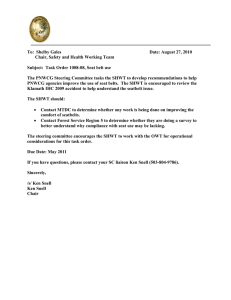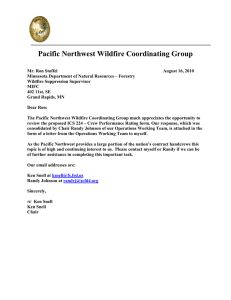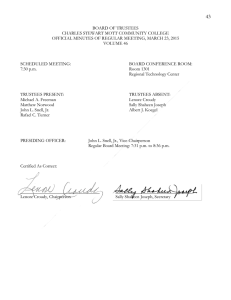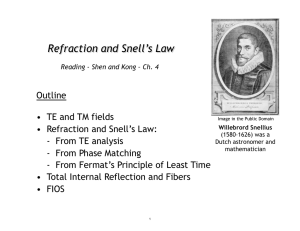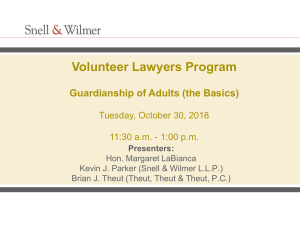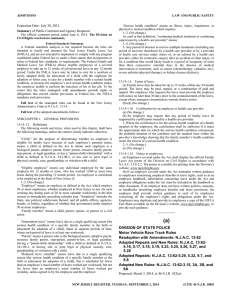Math 1210-001 Monday Mar 7 WEB L112
advertisement
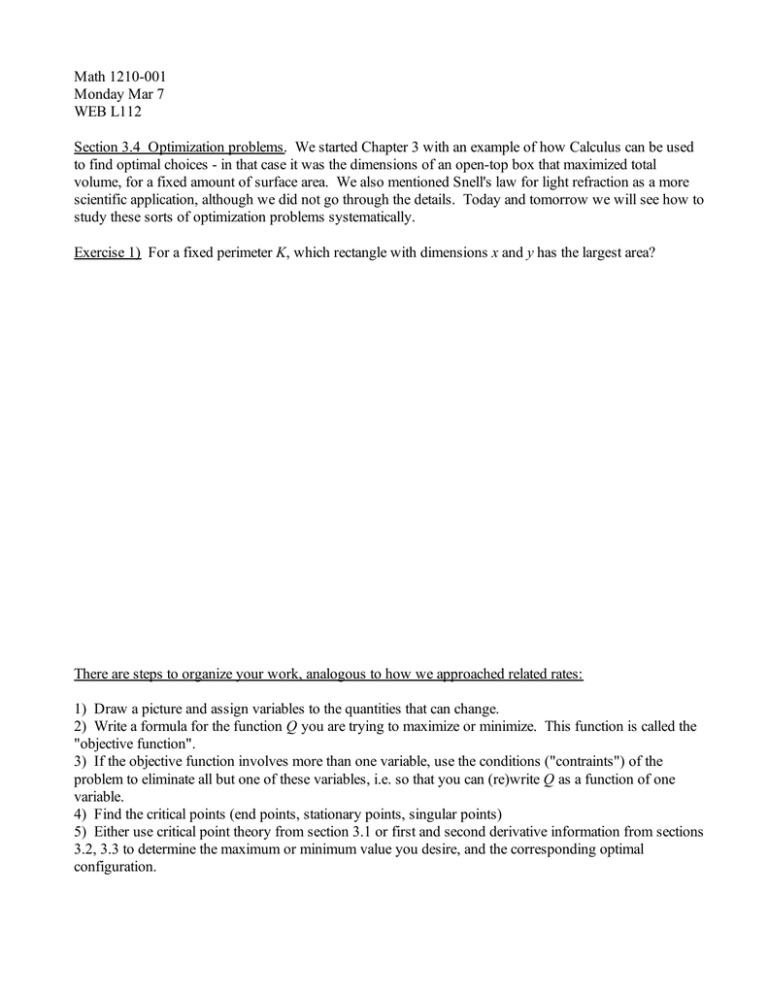
Math 1210-001 Monday Mar 7 WEB L112 Section 3.4 Optimization problems. We started Chapter 3 with an example of how Calculus can be used to find optimal choices - in that case it was the dimensions of an open-top box that maximized total volume, for a fixed amount of surface area. We also mentioned Snell's law for light refraction as a more scientific application, although we did not go through the details. Today and tomorrow we will see how to study these sorts of optimization problems systematically. Exercise 1) For a fixed perimeter K, which rectangle with dimensions x and y has the largest area? There are steps to organize your work, analogous to how we approached related rates: 1) Draw a picture and assign variables to the quantities that can change. 2) Write a formula for the function Q you are trying to maximize or minimize. This function is called the "objective function". 3) If the objective function involves more than one variable, use the conditions ("contraints") of the problem to eliminate all but one of these variables, i.e. so that you can (re)write Q as a function of one variable. 4) Find the critical points (end points, stationary points, singular points) 5) Either use critical point theory from section 3.1 or first and second derivative information from sections 3.2, 3.3 to determine the maximum or minimum value you desire, and the corresponding optimal configuration. 2) Farmer Jones wishes to make 3 identical pens, with 120 linear feet of fencing (total), as shown in the diagram. What dimensions for the total enclosure make the area of each pen as large as possible? (The barn wall is used as one side.) 3) Find the nearest point on the line y = 2 x C 1 to the point 5, 1 . Notice that the method you use could be used to find the nearest point(s) on many curves besides lines, to points not on those curves. Also compare the slope of the line y = 2 x C 1 to the slope of the segment connecting 5, 1 to its nearest point on the line. Snell's Law for how light refracts when it moves from one medium to another (for example from water to air, or vise verse): Let the speed of light in medium one be v1 , and let it be v2 in medium two. Assume the two media are separated by a plane (as in figure). Let q1 and q2 be the angles the light paths make with the perpendicular to the interface. Then Snell's Law says sin q1 sin q2 sin q1 v1 = or equivalently = . v1 v2 v2 sin q 2 Snell's law is a consequence of Calculus (stationary point and first derivative test), and Fermat's Principle which says that light follows the paths that minimize the total time it takes for the light to get from point Q to point P in all media. Here's the explanation, which we will discuss and enlarge upon. https://en.wikipedia.org/wiki/Snell%27s_law
